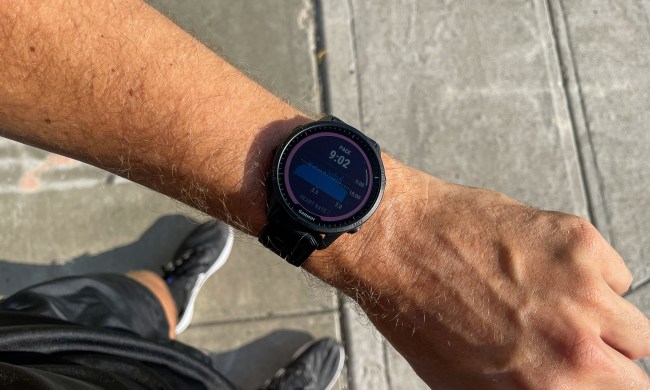
“We need to give people transportation options,” said Vi Lyles, the mayor of Charlotte, North Carolina.
That’s why Charlotte is participating (along with Omaha and Detroit) in a new project: working with transportation logistics firm Passport and micromobility unicorn Lime to determine the best use of escooters in its city.
Companies like Bird, Lime, and Spin have generated considerable buzz in the investment community, but they have also lit a fire under some city governments, becoming synonymous with dysfunction, infestation, and disruption — and not in a good way.
Cities across the globe are installing technology to gather data in the hopes of saving money, becoming cleaner, reducing traffic, and improving urban life. In Digital Trends’ Smart Cities series, we’ll examine how smart cities deal with everything from energy management, to disaster preparedness, to public safety, and what it all means for you.
The problems have been so rampant that cities like Las Vegas, Nevada and Asheville, North Carolina have banned escooters and dockless ebike services before they even had a chance to gain a foothold. An ounce of such prevention may save a pound of cure (preventing infrastructure headaches and traffic chaos), but it can also deprive people of an opportunity to try alternatives that could ultimately help fix existing transit problems.
So Mayor Lyles said she didn’t want to go that route. “Our goal is to get people participating in ways that benefit our environment,” she said.
Electric micromobility options like ebikes and escooters therefore represent a way to get people out of pollution- and traffic-generating cars. They can also be used in conjunction with existing public transportation systems, such as Charlotte’s new 20 miles of light rail, providing so-called “last mile” transportation solutions to get people home.
And there’s no denying that people want such options.
“When e-scooters first came to town,” said Charlotte’s city manager Marcus Jones, “it left our shared bike program in the dust.”
But how and where were people using the e-scooters versus ebikes? Where were they leaving the micromobility vehicles? Were they serving the right neighborhoods? How could they be more efficiently deployed and should the city offer parking areas for the two-wheelers?
Scoot first, ask questions later
“The biggest challenge with cities,” said Passport CEO Bob Youakim, is that these questions rarely get answered. E-mobility startups “rather than asking for permission, just throw whatever into the city,” he said.
The partnership with Charlotte and Lime is designed to take a much different approach to multi-modal transportation. Passport already provides software solutions for transportation systems, including rules management, enforcement, ticketing, and payment systems for some 600 municipalities around the world.
“We’re trying to change the social norms about scooters.”
The company can handle everything from smartphone apps for public transportation to usage statistics for local DOTs. The company also happens to be based in Charlotte, making it the ideal partner to work with the city.
By tracking scooter rentals and coordinating it with other information about public transit routes, congestion, and parking information, Passport can report on where scooters and bikes tend to be idle, where they get the most use, and how they might be deployed to serve more people. Furthermore, rather than railing against escooters, such information can help a city encourage proper use and behavior.
“We want to incentivize it,” explained Jones. “Maybe you would get money off the rental if you wear a helmet, for example, or if you park it in a designated spot.”
Think of it as micromanaging micromobility using behavior modification.
In Charlotte they want to grant mobility access to the curb, enforce speed limits, and prevent escooters from being used in parks, said Passport’s Youakim, “But how do you enforce compliance?” It’s a tricky mix of carrot and stick, offering riders a discount if they drop off scooters and bikes in specific areas, while charging them more when they disregard the rules.
“We’re trying to change the social norms about scooters,” explained Mayor Lyles. And so far micromobility companies like Lime seem to support the idea.
“Incentivizing, that’s one of the concepts we’re testing,” explained Evan Costagliola, Lime’s director of transportation partnerships. “At some point, some level of penalty is needed to discourage bad behavior, although we feel a more effective tool is using an incentive.”
The road ahead
By working together, Costagliola also points out three significant benefits for Lime and its customers. Initially, the coordination with the city of Charlotte and Passport could help Lime right-size its fleet, offering enough scooters (now in their third generation with improved performance and reliability) to satisfy demand, while also reducing the number that remain idle, littering sidewalks.
A mix of transportation solutions is needed. It’s not all about two-wheelers and rideshares
Second, the data generated by the project can be used to demonstrate to other cities the value that Lime’s shared escooters provide. It will help the company demonstrate the benefits it offers rather than simply being seen as just another Silicon Valley bad actor.
Third, the pilot program should help create a more sustainable business. The city can determine how much it should charge for, say, parking an ebike or for the annual license on a shared escooter, while Lime can find the sweet spot between the amount of customer usage, maintenance expenses, municipal fees, and what it should charge riders.
It’s a collaborative rather than adversarial approach that could prove to be the model for other cities around the nation. E-mobility company Bird, by way of contrast, has had some tussles with the city of Raleigh, NC, over license fees and what it should charge consumers. Passport’s Youakim emphasizes, however, that each city is different, facing different climates with different topographies and different demographics and therefore different transportation needs.

“We’re often thought of as a city of millennials,” said Mayor Lyles, by way of example. She said part of that impression is thanks to the influx of roughly 1,000 new citizens to the city every week.
But a truly multimodal approach to transportation is needed in Charlotte. The city is home to the University of North Carolina at Charlotte, for example, with several other colleges clustered around town. And there’s a significant retirement community with about 10 percent of the population classified as seniors — people unlikely to go whizzing around town on e-scooters.
So a mix of transportation solutions is needed, which is why the city would like to add to its 20 miles of light rail trains. It’s not all about two-wheelers and rideshares. And there are issues related to electrification and especially getting access to those who are currently underserved.
“We can’t just forget about the other people,” said Mayor Lyles.







